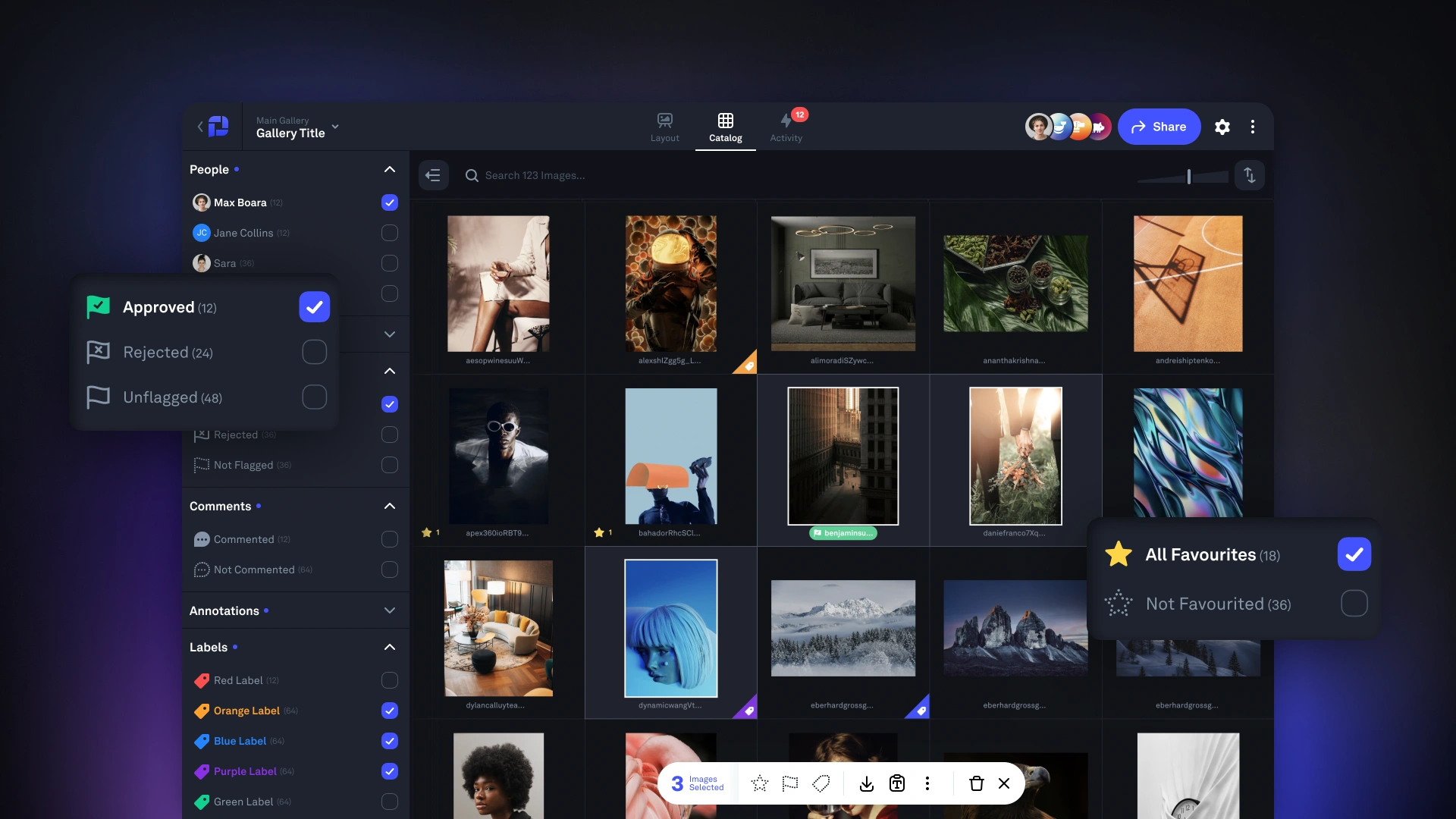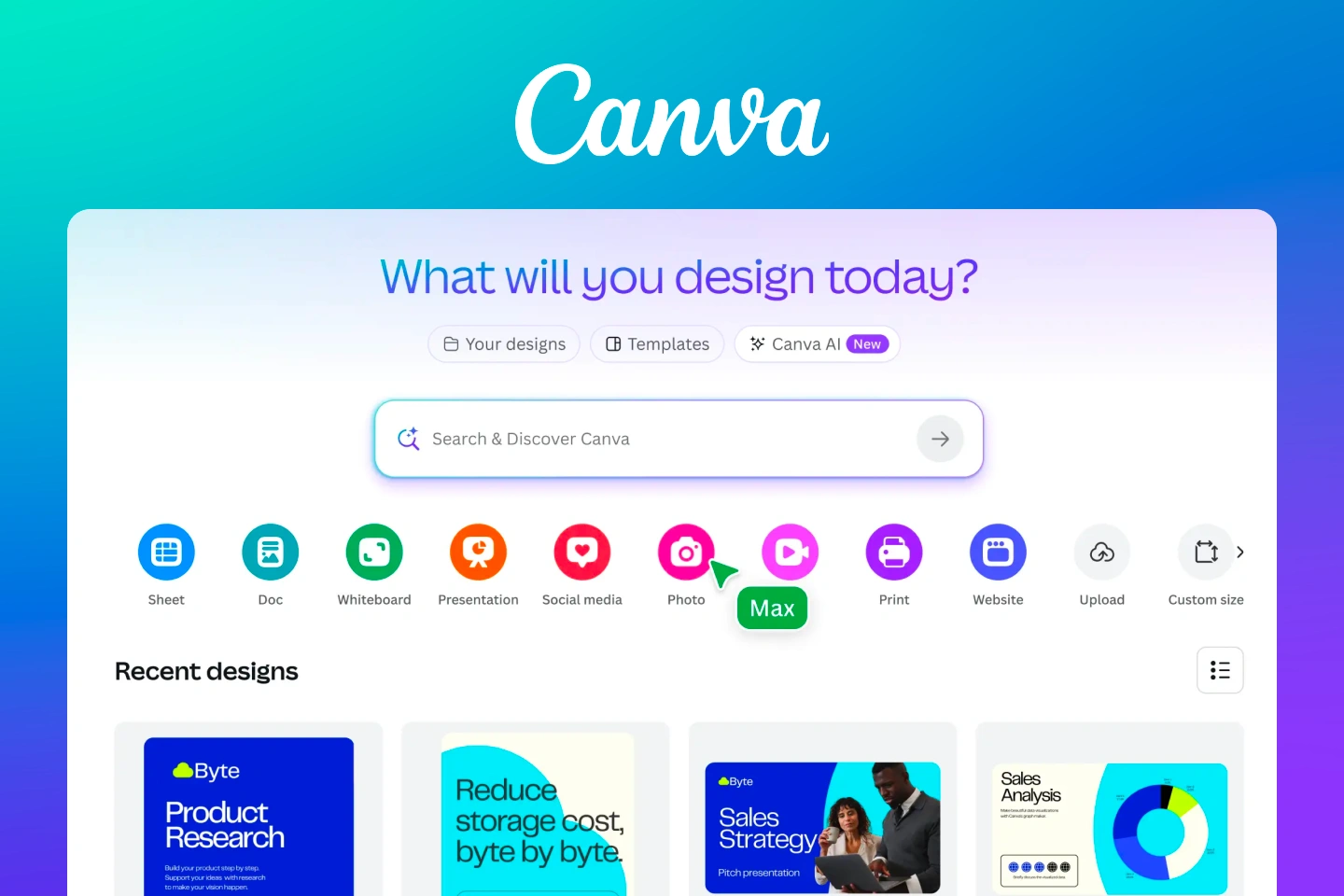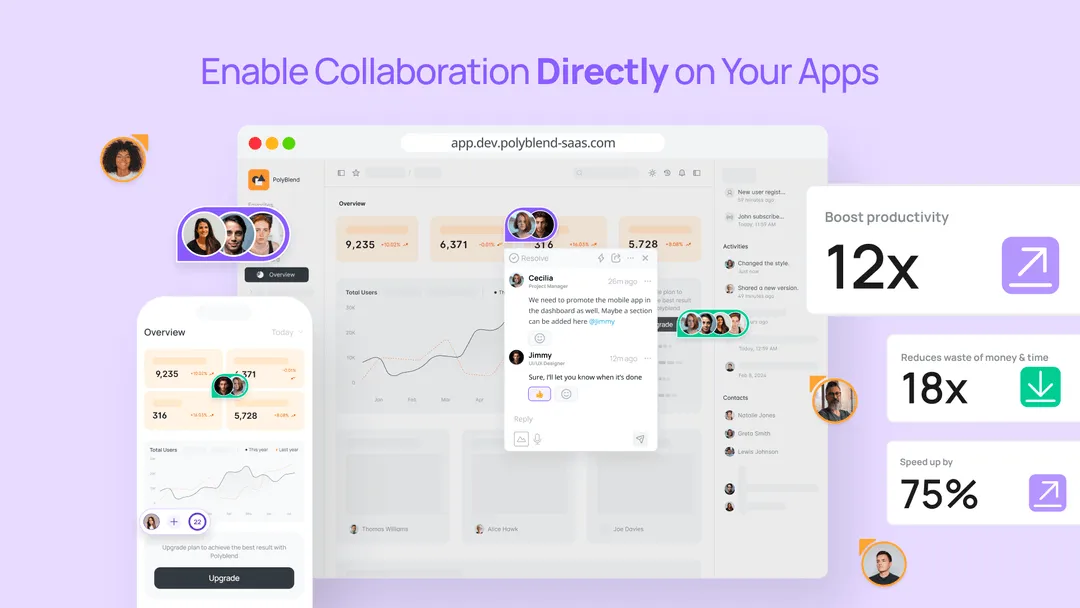We Tried the Best Design Collaboration Tools in 2025
Collaboration and design go hand in hand. And design collaboration tools are essential for any modern design team. We decided to put some of the top design collaboration tools to the test in 2025.
)
Helpful Summary
Overview: We evaluated the top five design collaboration tools for 2025, focusing on enhancing team productivity through features like seamless project management and real-time feedback.
Why trust us: We’ve helped over 10,000 creatives, agencies, and brands collaborate efficiently with our intuitive design collaboration tools.
Why this is important: Effective collaboration tools are essential for streamlining communication, boosting efficiency, and enhancing productivity, regardless of geographical location.
Action points: Our top picks for design collaboration tools include Picflow, Asana, Canva, Figma, and Commented.
Further research: Check out the Picflow Blog for more tool recommendations, insight, and guides.
Looking for the Best Design Collaboration Tools?
Designers—like all creatives—thrive on collaboration and feedback.
It’s how ideas are refined, projects are completed, and growth is achieved. But with the rise of remote work and distributed teams, collaboration tools are increasingly replacing physical meetings and in-person critiques.
Luckily, modern design collaboration tools are more than up to the task. In this Picflow guide, we share our top picks for the best design collaboration tools to help you and your team stay connected and productive.
But first…
Why Listen To Us?
Leading brands and top creative trust Picflow to simplify collaboration and feedback. We’ve helped over 10,000 teams worldwide optimize their design process and achieve amazing results. Our platform offers intuitive tools for real-time collaboration, version control, and project management—all in one place.
What Are Design Collaboration Tools?
Defining design collaboration tools is pretty straightforward. They’re tools that help designers collaborate on designs (shocking, I know).
But what does this look like in practice?
Just like there are many forms of design, there are also many forms of design collaboration. Some tools focus on real-time feedback on graphics and images, others let you create and share design prototypes, and some keep teams on track with project management features.
Here’s a list of some of the tasks that design collaboration tools can help with:
Brainstorming and ideation
Web design
Graphic design
Prototyping and wireframing
Version control
Review, proofing & approval
Delivery
Many tools help with a few of these tasks at once.
 For example, Picflow is an online gallery tool that works well for file sharing, review and approval, feedback, and project delivery—all in one place. But we’ll talk more about Picflow’s many features later.
For example, Picflow is an online gallery tool that works well for file sharing, review and approval, feedback, and project delivery—all in one place. But we’ll talk more about Picflow’s many features later.
Benefits of Using Design Collaboration Tools
Streamlined Communication: With features like chat, comments, and notifications, team members can easily share feedback, discuss ideas, and resolve issues without requiring lengthy email threads or in-person meetings.
Enhanced Efficiency: By enabling simultaneous editing and version control, design collaboration tools streamline the design process and reduce the time spent on manual tasks such as file sharing and tracking changes.
Improved Productivity: Design collaboration tools empower teams to work more efficiently and productively, regardless of geographical location or time zone. With access to project files and resources anytime, anywhere, team members can stay productive and focused on their tasks, leading to faster project completion and delivery.
Greater Transparency and Accountability: These tools provide visibility into project progress and status, allowing team members and stakeholders to track changes, monitor deadlines, and assess project milestones.
Criteria To Consider When Choosing Design Collaboration Tools
Ease of Use
Considering the ease of navigation and accessibility is crucial when selecting design collaboration tools for your team. Opt for platforms that offer intuitive interfaces and straightforward features to streamline your workflow. Look for tools that prioritize user experience, making it easy for team members to collaborate seamlessly.
Choose software that doesn't require extensive training to use effectively, ensuring a smooth onboarding process for all team members. Prioritize tools with clear navigation menus and minimal learning curves to boost productivity.
Collaboration Features
To select effective design collaboration tools, prioritize features that enhance team communication and streamline project coordination.
Look for tools that offer real-time collaboration capabilities, allowing team members to work together seamlessly on projects. Features like commenting, annotation, and version history are essential for clear communication and tracking changes.
Pricing
Consider factoring in pricing structures when selecting design collaboration tools to ensure they align with your budget and provide value for your team's needs.
Look for tools that offer transparent pricing plans without hidden fees, allowing you to understand the costs involved easily. Evaluate if the pricing scales with your team size and usage to avoid unnecessary expenses as your collaboration needs to grow.
5 Best Design Collaboration Tools
Picflow
Asana
Canva
Figma
Commented
1. Picflow
Picflow is a client gallery tool that helps designers and agencies collect feedback, manage review and approval, and deliver their work to clients and stakeholders.
 Our intuitive gallery designer is at the core of Picflow’s feature set. It allows you to create stunning design galleries in minutes by customizing the layout, adding your branding, and resizing images to fit your needs.
Our intuitive gallery designer is at the core of Picflow’s feature set. It allows you to create stunning design galleries in minutes by customizing the layout, adding your branding, and resizing images to fit your needs.
Once you’re done, you can easily share access with reviewers, stakeholders, and clients via a simple invite link. They can leave comments, tag favorites, mark designs as approved, and more. This helps streamline the feedback process and keeps everyone on the same page.
Key Features
Gallery Designer: Allows users to create responsive galleries with various layout options, ensuring that presentations look good on any device.
Review Options: Provides feedback tools, including favorites, flags, color labels, and annotations.
Workflow Mode: Offers features like review filters, bulk actions, and filename exports to enhance efficiency in managing creative projects.
Approval Limits: Lets users set approval limits for certain numbers of designs and limits downloads to approved designs.
Easy Sharing: Easily share design assets or entire galleries with a simple link—no file-sharing tools or ZIP files.
Pros & Cons
Pros
Trusted by major brands
Highly rated
Responsive galleries
Comprehensive review tools
Strong security
Flexible pricing
Seamless collaboration
Cons
Limitations on the free plan
2. Asana
Asana is a versatile task and project management tool designed to streamline task management and collaboration for teams and businesses. It addresses common issues such as disjointed communication and unorganized tasks through a user-friendly interface, versatile project views, and robust integration capabilities.

Key Features
Task Management: Enables the creation, assignment, and tracking of tasks with detailed options for clear communication.
Project Planning: Offers flexible views for dynamic project planning and timeline mapping.
Collaboration Tools: Facilitates team communication through comments, pages, and conversations.
File Sharing: Integrates with services like Dropbox and Google Drive for easy design management.
Pros & Cons
Pros
Intuitive interface
Extensive customization
Seamless integration
Task dependencies and milestones
Advanced search & reporting
Robust customer support
Wide range of integrations
Cons
Overwhelming range of features for new users
Basic analytics may not meet all team leads
Can be expensive
3. Canva
 Canva is recognized as a powerful online platform that makes graphic design simpler and more collaborative. It stands out for its intuitive interface, vast template library, and an array of stock images and design elements, making graphic design accessible and efficient.
Canva is recognized as a powerful online platform that makes graphic design simpler and more collaborative. It stands out for its intuitive interface, vast template library, and an array of stock images and design elements, making graphic design accessible and efficient.
Key Features
Drag-and-Drop Interface: Simplifies the creation of designs, making them accessible to users of all skill levels.
Extensive Template Library: Offers a wide variety of templates for different needs, aiding quick design creation.
Photo Editing Tools: Integrated directly within Canva for a seamless design workflow.
Real-Time Collaboration: Enables teams to work together on designs in real-time.
Pros & Cons
Pros
Value for money
User-friendly interface
AI Features available
Eas team collaboration
Mobile app functionality
Extensive template library
Integrated photo editing
Real-time collaboration tools
Cons
Some users report slow performance, which can hinder the design process
Limited export formats
4. Figma
 Figma has established itself as a leading design and prototyping tool, which is crucial for facilitating collaboration among designers, developers, and stakeholders. Its cloud-based nature supports real-time collaboration, making it a versatile platform for UI/UX design, wireframing, brainstorming, and more.
Figma has established itself as a leading design and prototyping tool, which is crucial for facilitating collaboration among designers, developers, and stakeholders. Its cloud-based nature supports real-time collaboration, making it a versatile platform for UI/UX design, wireframing, brainstorming, and more.
Key Features
Code Generation: Streamlines the transition from design to development by converting design elements into CSS, Swift, or Android XML.
Plugins and Integrations: Offers a range of plugins and integrations to enhance workflow and extend functionality.
Animation and Micro-Interaction: Enables designers to create engaging interfaces with small-scale animations, enhancing user experience.
Real-time Collaboration: Similar to Google Docs, it allows teams to work on the same file simultaneously, ensuring clear, contextual feedback.
Pros & Cons
Pros
Seamless team collaboration
Intuitive interface
All-in-one tool
Cloud and desktop-based
Generous free plan
Extensive plugins and integrations
Easy handoff to developers
Version history available
Cons
Needs adequate RAM and graphics capacity
Learning curve
5. Commented
 Commented is a versatile collaboration tool designed to enhance the review and feedback process on digital products like websites and apps. It integrates seamlessly into your digital projects, allowing teams to share comments, annotate directly on live apps and web pages, and collaborate more efficiently.
Commented is a versatile collaboration tool designed to enhance the review and feedback process on digital products like websites and apps. It integrates seamlessly into your digital projects, allowing teams to share comments, annotate directly on live apps and web pages, and collaborate more efficiently.
Key Features
Real-Time Collaboration: Enables teams to work together directly on live projects, improving communication and speeding up the review process.
Annotation Tools: Offers annotation tools for circling, highlighting, and adding visual examples to articulate feedback more effectively.
AI-Enhanced Copy Suggestions: Utilizes built-in AI to offer copy suggestions, grammar, and spelling checks, ensuring content is free of errors.
Integrations: Supports integrations with popular tools like Figma, Notion, Slack, and Zapier, fitting seamlessly into your existing workflow.
Pros & Cons
Pros
Directly embed comments on any website element
Enhanced team communication
Visual feedback
AI-driven content optimization
Versatile integration
Efficient teamwork
Quick share process
Rich annotation
Cons
Internet dependent
Learning curve
Limited offline functionality
Conclusion
Collaboration tools have become indispensable for bridging the gap between creativity and efficiency. The tools we listed above each bring their unique strengths to the table—facilitating seamless collaboration and catering to a wide range of needs, from individual freelancers to large enterprises.
Picflow is a modern online gallery platform that empowers creative professionals to share, manage, and approve visual content effortlessly.
Sign up here and try Picflow for free now!

)